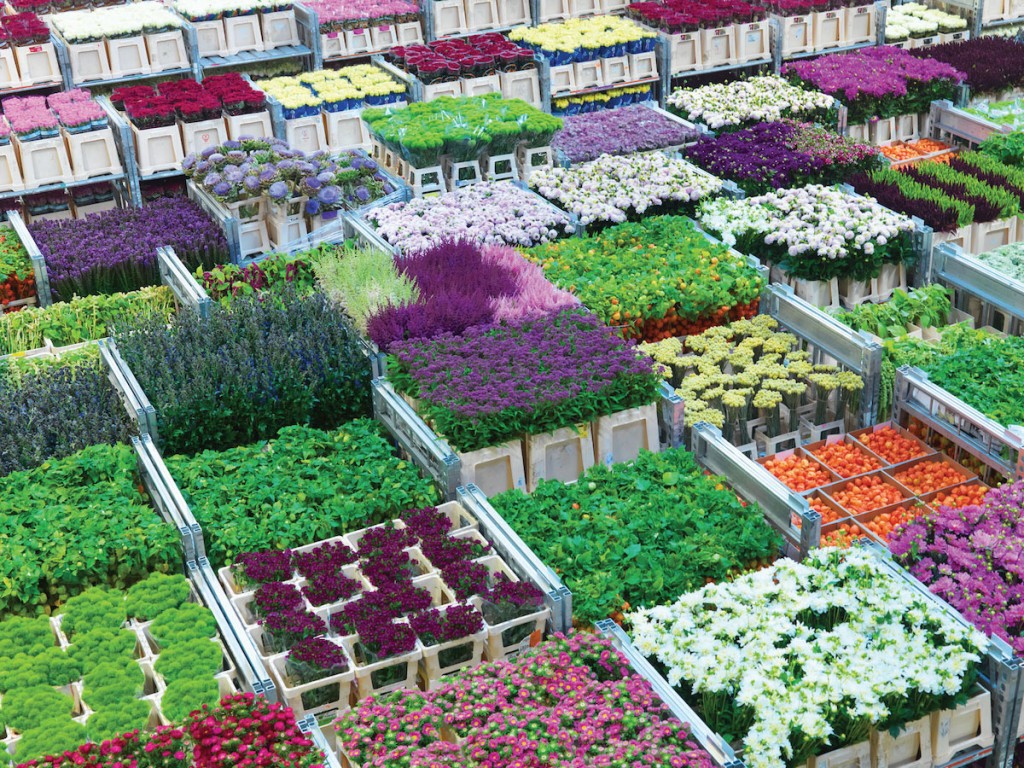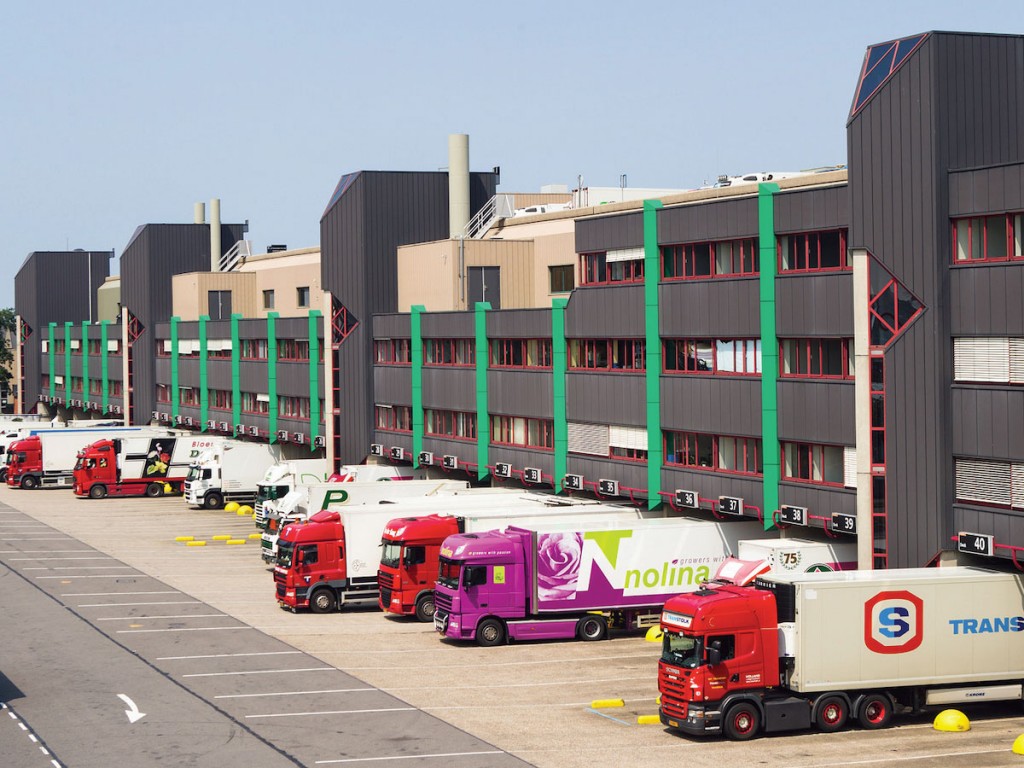Page 1: New Business Environment
Page 2: Rethinking the System
What if you had to move 10 million cut flowers a day in and out of a complex with over 1,000 truck docks – how would you do it? Netherlands-based Royal FloraHolland wrestles with the complex logistics of moving that quantity to destinations to retailers in Europe, North America and Asia.
Royal FloraHolland is a logistics marvel. Each weekday, some 10 million cut flowers and plants are shipped into and out of the growers cooperative’s cavernous facility, just down the road from Amsterdam’s Schiphol Airport. Hundreds of workers zip around the gigantic complex on electric tractors, all towing trolleys containing buckets and buckets of flowers. As many as 22,000 trolleys are staged daily in this elaborate shuffle. Some carry freshly shipped flowers from trucks to vast cold storage. Others ferry those sold at auction from cold storage to be processed and then to waiting trucks or to wholesalers in adjacent warehouses.

The building is slotted with more than 1,100 docks. On one side of the building, hundreds of trucks unload flowers from growers in the Netherlands, as well as those coming from the airport, some five miles away. On the other side, trucks load up flowers, destined for retailers around Europe, or back to the airport, where they are flown to North America and Asia.
This more than 5.5 million square feet facility in the town of Aalsmeer, along with four satellite auction buildings around the Netherlands, represents the epicenter of the global flower trade. Some 40% of worldwide flower exports flows from these operations. Aalsmeer is the single largest distribution facility in the world today. FloraHolland sells 12 billion products a year and is a more-than $5 billion business.
New Business Environment
But — and it’s a big but — FloraHolland must face a changing business environment. Direct sales of cut flowers are growing rapidly, while traditional auction sales are shrinking. (FloraHolland’s business is now 43% auction and 57% direct.) Direct buyers are far more diverse, both in terms of what sorts of businesses they represent and what they want. Consumers, meanwhile, are demanding more rapid delivery even on the smallest of orders, and retailers must respond. Markets are diversifying geographically, and becoming more far-flung.
All this puts additional stresses on the supply chain, as it impacts FloraHolland, and the cut flower trade in general.
Just one example: Auction buyers are now purchasing on average smaller lots than in the past. That necessitates more trolleys and more time needed to separate orders and process them. Far from promoting a more automated system, this paring of order size means there needs to be more labor, not less.
FloraHolland is grappling with one more trend: The global marketplace in cut flowers is increasing, but the cooperative’s share in that universe is contracting. FloraHolland is leaning on its logistics for ever-more improvements in process and technology, even as its business model evolves.

“We look where we can to facilitate innovation in the supply chain,” said Eline van den Berg, program manager with Holland Flower Alliance, a strategic alliance between FloraHolland, Schiphol Cargo and KLM Cargo. Van den Berg, who for many years was a senior logistics consultant with FloraHolland, met with a group of journalists recently at the Aalsmeer facility. This was part of a briefing sponsored by the Netherlands Foreign Investment Agency (NFIA).
However, improvements at the distribution facility alone won’t overcome many of the biggest logistics-related issues. FloraHolland needs other parties — from growers and freight forwarders to distributors and transport operators — along the chain to buy into shifts and advances. “Our supply chain is quite complex. It’s an ecosystem,” said van den Berg. “If you want to make a change in the supply chain, you have to work together.”





